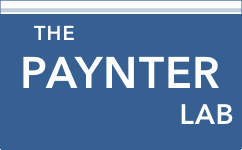|
Post-Planting Monitoring Survey
The post-planting monitoring (PPM) survey is critical to understanding the short-term factors affecting oyster spat survival in the northern Chesapeake Bay. Spat are planted on sites that are selected through our ground truthing survey in an effort coordinated by the Oyster Recovery Partnership (ORP). Spat are provided by the University of Maryland Center for Environmental Science’s Horn Point Oyster Hatchery. The hatchery has been producing spat-on-shell for over two decades and the hatchery staff are quite the spat experts! The hatchery provides the average number of spat-on-shell that are planted at each planting event, the total number of spat planted as well as the average size of spat planted. These data are critical to the monitoring effort, as they provide baseline data that the PPM survey data are compared to. Some photos of the planting process are shown below.
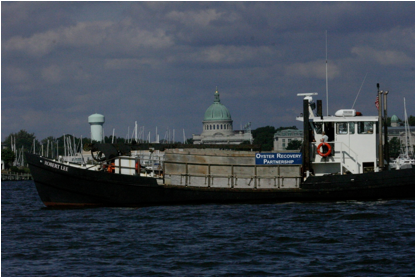
Figure 1. The ORP’s planting boat, the Robert Lee, is shown below loaded with spat-on-shell for a planting.
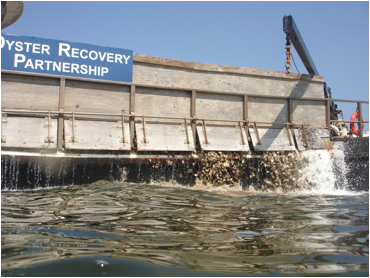
Figure 2. Once the Robert Lee reaches the target site, panels on the side of the boat are lifted and the spat fall to their new home on the bottom.
As the spat fall to their destination on the bay bottom, they are instantly subject to the environmental conditions at that site. The spat are usually less than 3 mm in size when they are planted and are therefore extremely vulnerable to the environment they are placed in. This is the main reason why it is so important to choose sites for planting that are ideal for spat survival. Below is a picture of freshly planted spat-on-shell in the Choptank River.
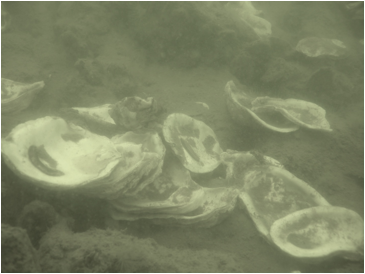
Figure 3. Recently planted spat-on-shell on the bay bottom. New shells are easily visible (white shells in this picture) on top of old shells immediately after planting.
Once the spat have been in the water for 4 – 8 weeks, divers from the Paynter Lab collect spat-on-shell from each planting site. The path of the planting boat is recorded during each planting and the boat tracklines are used by the Paynter Lab to target exactly where the divers will sample the planting. Below is a picture of planting tracklines with PPM sampling points from the 2011 PPM survey of Cook Point oyster bar in Eastern Bay.
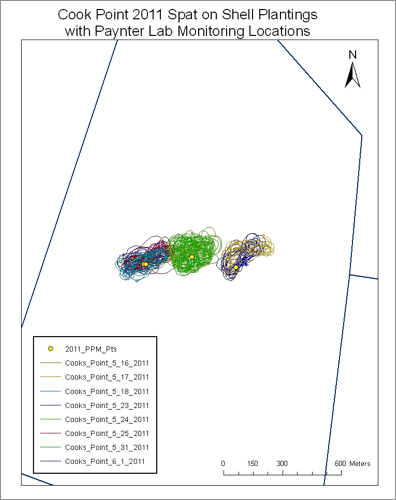
Figure 4. An example of a site planted with spat-on-shell by the ORP. Colored lines represent tracklines created using spatial mapping software on the boat, and show the actual path taken by the planting vessel.
Spat are collected using quadrats in order to obtain data on the density of spat at a site. Below is an explanation of the type of data collected at each PPM sampling event.
Table 1. Data collected during PPM surveys.
Observation Type |
Observation Detail |
Spat Density (# Spat/m2) |
# of spat per quad/area of quadrat |
Spat Size (mm) |
At least 50 spat are measured per site |
Clump Size (# Spat) |
How many spat present per shell |
Substrate Type |
Sand, mud, or shell. |
Planting Density |
Based on planting boat tracklines provided by ORP; high or low. |
The PPM data from each planting are analyzed for trends in short-term spat survival. These data have proven useful in the past in refining planting site selection and understand the factors that impact spat survival. With the help of the ORP and the Horn Point Oyster Hatchery we hope to continue to improve the survival of spat planted on restored bars in Maryland.
For more specific PPM data inquiries please email us at: paynteroysterlab@gmail.com
|
